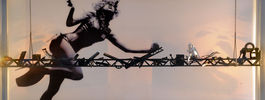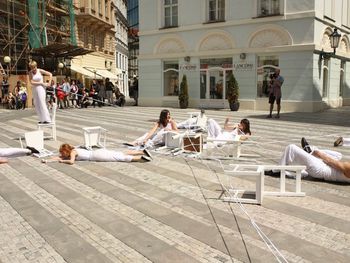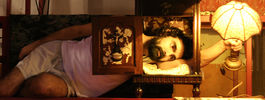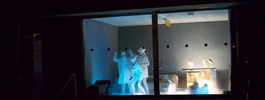

1971 » Uruguay » Stage design and costumes
| Curator: | Luis Turianski |
| Authors of Theme: | Luis Turianski |
URUGUAY
At times as the development of plastic and graphic arts was being characterized by a stage that we could designate as renaissance, the scenic designers of Uruguay passed through a period of stagnation and were, at best, under the influence of expressionism and artificial stylization. This backwardness was in a direct connection with the backwardness of the whole Uruguayan theatre. They had to wait for the facility of assimilating to the new forms and methods — that made themselves felt already within almost the total scope of the theatrical profession — until the moment as the waves of recent experiences touched the stagy activities of the country. Only then these impulses commenced to become reflected in the field of stage and costume design, too. The generation of originators rendering to the stage its veritable function was still little in number the level of its talent, however, guaranteed a certain progress. In that sense the group of Jorge Carrozzino and Carmen Prieto exercised the most considerable influence on the Uruguayan theatre. Carrozzino-Prietro worked very intensively: in the course of one single season they have brought into effect half a dozen of very important productions. For the polemic play by the national author Hiber Conteris — The Assassination of Ivíalcolm X, having been performed at the theatre I. T. El Galpón, they set up on t(he stage truncated cubes moving forward with their edges towards the auditorium, thus being suggestive of a ship's prow; for a new audacious version of Hamlet they constructed a system of slightly sagged white panels on which they had the shadow-play of slide projections become effective; bascule-surfaces having been composed in the manner of neo-plasticism contributed to a new fashion of rhytmization as for the music of the Black Opera; the scene of double-gangers in The Maids by Jean Genet was surrounded by a metallic demicircle having the effect of a deforming mirror; into the scene of the Beggars Opera they put some large rolling platforms in order to get moving the changeable face of the satire and its songs. Apart from the new very ingenious visual attractions which, it appears, support their work, these two artists, Carrozzino-Prietro, have yet deserved well of another feature: they penetrate profoundly into the sense of ideas of each play, in the context of which the scene reflects the dramatic tension.









